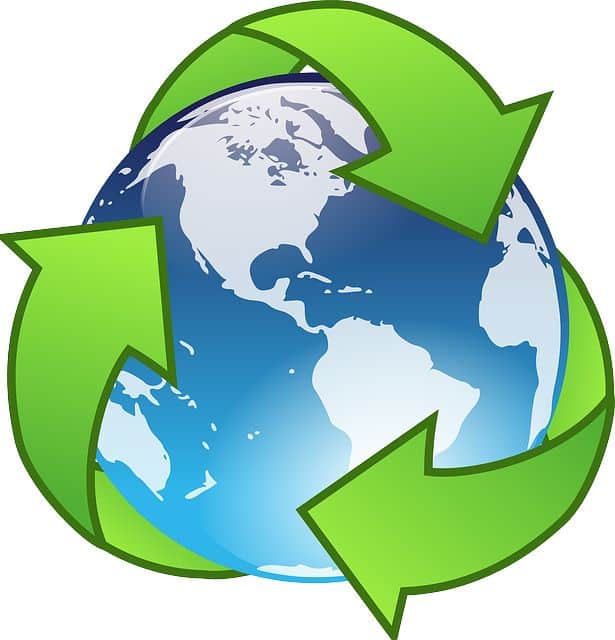A piece of trash discarded on the coast of California could end up traveling across the Pacific and eventually wind up on the ocean floor. The Great Pacific Garbage Patch is one example of why it’s important to be reducing and recycling as much as possible.
Let’s look at 5 simple steps you can take to reduce the amount of waste in your life.
Why Should You Reduce and Recycle?
There are several benefits to recycling and reusing items as much as possible:
- Help prevent pollution.
- It saves energy.
- You can save money.
- There’s less waste in landfills and incinerators.
- You’ll get more use out of the things you own.
Many of the benefits of recycling are about the environment but as you can see, some of them help you too.

Tip 1: Buy Used
When you’re buying something, consider buying used or pre-owned. Many companies sell pre-owned items alongside new ones. They often re-certify these products to be like new, including the same warranty. Cars, computers, smartphones, and various other products are available this way.
Buying used means one less product is made so it saves all the resources that would normally get used in the manufacturing process. And in some cases, older versions of a product are even better than the latest ones.
Tip 2: Look for Minimal Packaging
The packaging for many products is as big (or bigger) than the product itself. This packaging usually gets thrown out once you open it. Some companies have started reducing the amount of packaging to reduce waste, such as Amazon’s Frustration-Free Packaging program.
This can make the item less obvious when you’re shopping since the ones with the bigger packages will be more obvious on the shelf. Make the choice to look for the most efficient and environmentally-friendly package when you’re shopping instead of grabbing the one that jumps out at you first.
Tip 3: Get Reusable Items When Possible
Whenever possible, get reusable items instead of disposable. For example, take your own silverware and dishes to work to use for things like food days and potlucks instead of relying on paper plates and plastic cutlery.
This doesn’t only help reduce waste, it saves you (or your company) money. The cost of disposable items can add up pretty quickly.
Tip 4: Take Care of Your Things
This tip may seem obvious but a lot of people overlook it. Taking care of the things you own makes them last longer. This is a way to “reuse” the stuff you already own instead of replacing it when it breaks.
Along the same lines, consider repairing the things you already own rather than replacing them when something goes wrong. Some things can cost as much to repair as to replace but replacing them has an added “cost” to the environment.
Tip 5: Borrow or Rent
If you aren’t going to use something regularly, it might make more sense to borrow or rent it than to buy it. Like buying used, borrowing or renting something reduces the manufacturing impact.
While rental costs may seem high compared to buying something outright, if you’re not going to use it very often you may still spend less in the long run. And you won’t be throwing it into a pile for junk removal in a few years.
Getting People on Board With the Benefits of Recycling
It can be frustrating if you’re the only person who seems to care about trying to reduce and recycle. Why not motivate the people around you to help?
Try setting up a contest or challenge for your office, school, or other groups. The most creative idea for reusing and recycling could win a trophy or medal, for example. Get people interested in helping.
If that sounds like an interesting idea, check out www.trophiesplusmedals.co.uk, where you’ll find a large selection of trophies and medals to choose from.
Reducing and Recycling Is Good for the Environment
Reducing and Recycling Good for People
Most of the information you’ll find about how to reduce and recycle is in reference to how it can help the environment. That’s definitely a good reason for it but you’ll benefit from it personally as well.
Whether it’s the money you save when buying pre-owned instead of new or how much more use you get out of the things you’re already comfortable with, you can feel good for selfish reasons too.
Renewable
The National Renewable Energy Laboratory estimates that renewable energy will power 80% of the US by 2050. Get started on helping reach that goal today.








